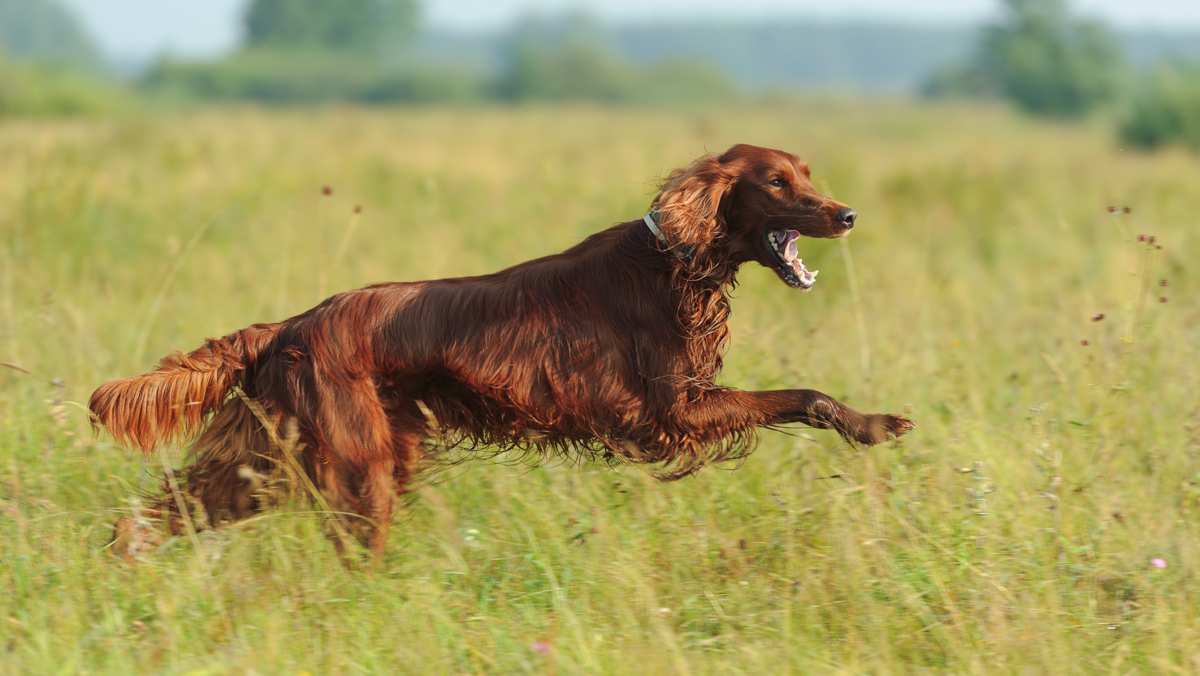Irish Setter Breed Details
Irish Setters will ideally find homes as gundogs or with an active, outdoorsy family-- the more space you have for them and the more time you can spend with them, the better! For hunters, this is a dog that can do it all: track via scent in the air as opposed to the group, point and retrieve. The cover land by quartering which refers to the zig-zag pattern they follow while picking up the scent of birds in the air. It's a fact the Irish Setter is an excellent family dog and will be a beautiful, loving addition to the household, even if you have other pets! There's a reason why this breed was the favorite of two US Presidents and at one point was the third most popular dog in America. Consider the pros and cons of the Irish Setter to get a better idea if this could be the best breed for you:




